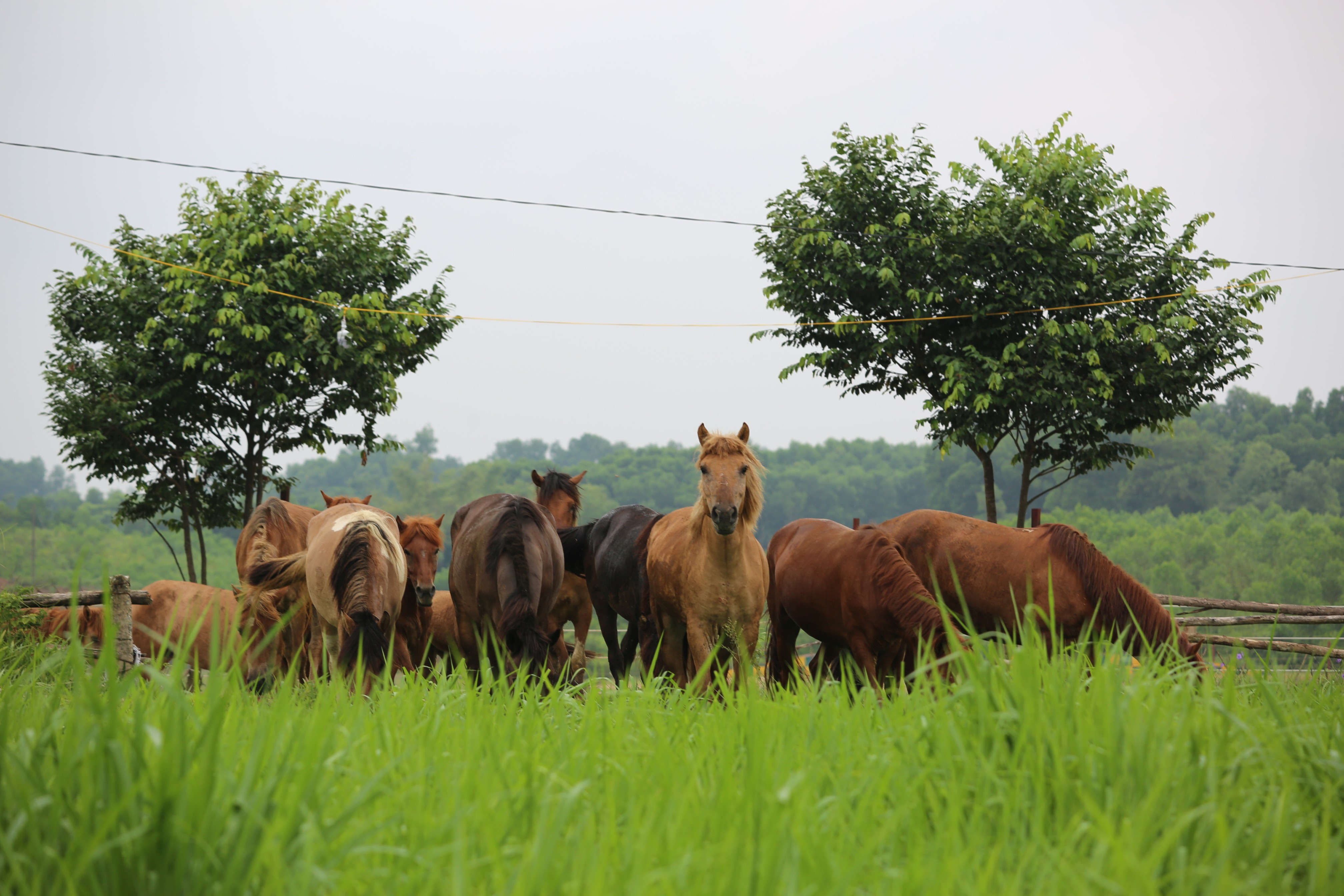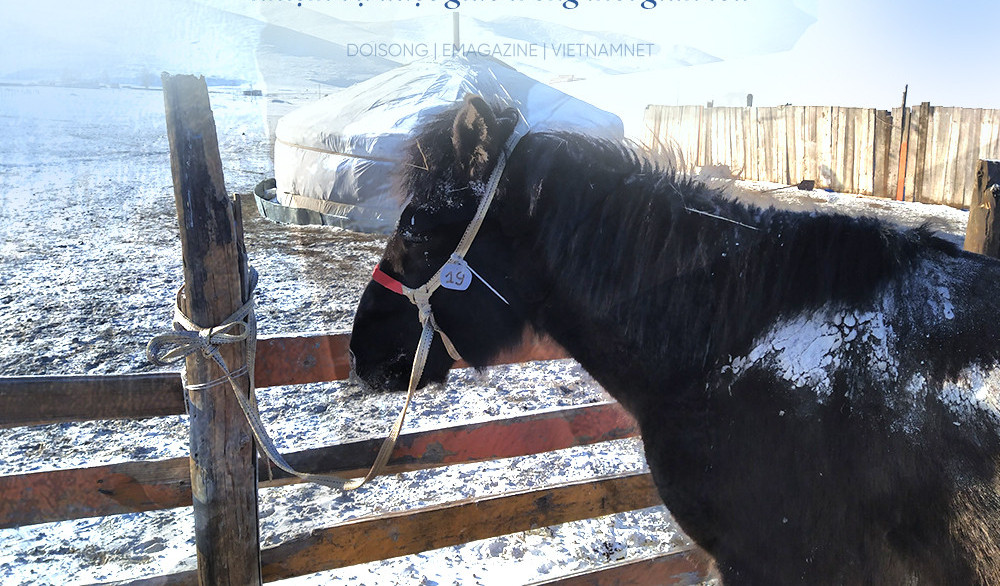
In severe weather conditions with a temperature of minus 30oC, snow 40-50 centimeters deep, and whirling winds, five Vietnamese officers of the Mobile Cavalry Police Corps were wrapped up in their work, learning how to ride horses and following procedures to transport 100 horses to Vietnam.
It was so cold that everyone had a nosebleed, but, to keep their spirits up, no one complained to their companions. All focused on the duty assigned to them – bringing 100 horses to Vietnam safely and smoothly.
The Gobi Desert in Mongolia sees temperatures climb to 39-40oC in summer and plummet to – 30oC or – 40oC in winter. Five members of the mission from Vietnam came to the desert in December 2019.
In the middle of the vast desert, they were arranged to eat and sleep in Mongolian-style tents. Every day, the team was trained to approach and catch horses, use tools to set bridle, put a bit on horses and keep reins on them.
The previous day, the members of the team learned to get acquainted with the horses. The next day, they had to learn how to ride a horse. The previous day, they rode horses with saddle. The next day, they had to ride horses without saddle and galloped very fast in the desert. As the time for training was short, the trainees had to acquire basic knowledge as soon as possible.
On January 4-5, 2020, more than 100 horses had been selected and moved to Ulan Bator.
Bringing horses to Vietnam was the great effort and strong determination of the head of the People's Public Security force and the officers and soldiers who were directly assigned the task.
Recalling the process of bringing horses from Mongolia to Vietnam, Lieutenant Colonel Nguyen Ngoc Hung, Commander of Mobile Cavalry Police, K02, under the Ministry of Public Security, said this was a historic reception process, because it was the second time Mongolia let its horses depart from the border in such a large number.
This shows the good diplomatic relations between the two parties, because horses are considered sacred objects of Mongolia. Only when considering Vietnam as a good friend did the Mongols give such a valuable genetic source.

The herd of 100 horses arrived in Vietnam and were carried to Ba Van Hill. Only 9-10 horses let cavaliers sit on them. Every time when soldiers tried to climb onto the horses’ back, they were knocked down.
“The typical characteristic of a wild horse is that once you can sit on its back, you must control it before you get off. If you can do this, the horse will be obedient,” said Lieutenant Colonel Le Sy Ha, deputy head of the horse training group.
“Therefore, there were sunny days, when soldiers had to get on horses’ backs right after they had lunch,” he explained.
Soldiers and the horses together experienced many exercises in different conditions, with big sounds, explosions, bumps, smoke and fires.
In order to gain the best possible results in cavalry training, the trainers designed specific training methods for each group of horses instead of mass training. That is, each horse practices in accordance with a lesson plan prepared for it, depending on its character and abilities.
The exercises and training methods were analyzed and put into a standard lesson plan.
Pointing his hand to the soldiers on the drill ground, Senior Lieutenant Colonel Le Sy Ha told VietNamNet: “These are our valuable assets. They are the first cavalry warriors."
Only soldiers with great love for animals and extremely good health conditions can be admitted into the calvary force. Getting injured during practice, such as facial tears, torn limbs and trauma are common for the brave soldiers.
Lieutenant Colonel and Team Leader Nguyen Ngoc Hung said in order to have a cavalry force today, soldiers and veterinary staff have to work very hard.
On the first days when the horses were brought to Vietnam, young soldiers received the support of seven experts from Mongolia. Later, they had to manage to do everything, with the assistance of veterinary experts from the Vietnam Academy of Agriculture and the Thai Nguyen Agriculture and Forestry University.
Now all the 100 horses are in good health, and some of them have gained 70-80 kilograms. And 40 young horses have come into the world. From wild horses, after undergoing training, they have become professional horses familiar with sounds, explosions, smoke and fire, and can do basic operations such as walking, standing, lying down, overcoming complicated terrains, overcoming barriers, fortifications, swamps, ponds and lakes; and transporting goods, food and weapons.
Nguyen Thao - Pham Hai